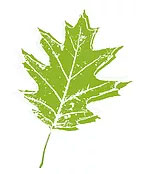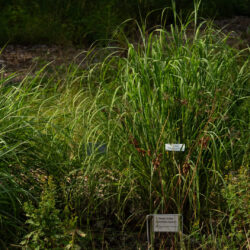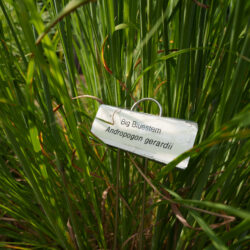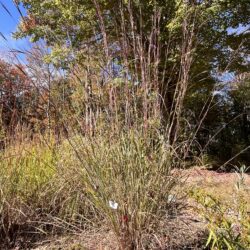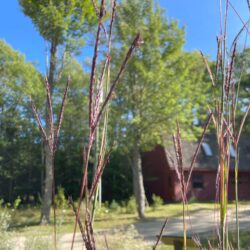Etymology
From the Greek words aner or andros meaning man and pogon meaning beard in reference to the hairs on the spikelets of some species in the genus. Honors Louis Gerard (1733-1819), French physician and botanist.
Native Habitat
Big bluestem is a major component of central North America's tallgrass prairies. It can be found in man-made or disturbed habitats, cliffs, ledges, floodplain , grassland, meadows and fields, shores of rivers or lakes, shrublands or thickets, woodlands.
Garden Uses
Big Bluestem is a top choice for naturalistic plantings, but it does self seed readily and may not be the best grass for small or highly manicured spaces. Plant it in groups as a border or screen, or individually as a tall accent plant.
Overview
Big Bluestem is a warm season grass with ornamental qualities fit for the garden and landscape. The remarkable foliage changes color from green to blue-green in summer, to a deep red-bronze in the fall and provides interest well into the winter. The growth stays compact until midsummer and compliments other perennials without overpowering them in the early season. The late summer heat brings a dramatic increase in height. The deep root system can be slow to develop, but once established, this grass is very drought tolerant. It will grow in almost any soil, from wet clay to dry sand. This native grass does need full sun to look its best.
Spread
The slump enlarges with age, typically to 2 - 3'
Leaves and Stems
The upright clump of stems with flattened alternate leaves (to 2' long and 3/8" wide) are linear and gray green to deep bluish green with bases that wrap around the stem. The upper surface is rough textured, often with long, white, spreading hairs near the base. The leaf blades often have purplish highlights when young and usually have some reddish or bronze fall color and coppery winter color.
Flowers
In late summer as the foliage is reaching its mature height, unique purplish three part flowers appear. The cluster tends to be about 4" long. 2 to 6 slender, finger-like spikes clustered at the top of the stem and at the tips of any branches in the upper plant. Spikelets (flower clusters) are in pairs all along the spike. The flowering stems bring the total height of this grass to 4-8' tall (typically at the taller end in moist soils and the shorter end in dry soils).
Fruit/Seed
Iconic and distinctive three-parted seed heads – said to resemble a turkey's foot.
Wildlife Associates
The grass is a host plant for numerous Skippers including the Arogos Skipper, Delaware Skipper, and Dusted Skipper, and it provides shelter and food for songbirds. Deer resistant.
Propagation
Big Bluestem can be propagated by seed or divisions. Big Bluestem is a bit slow to establish, but should form a vigorous clump by its third year. You can increase your supply of plants by digging divisions from the outside of the clump in late spring and transplanting them to a new location.
Ethnobotanical Uses
Native Americans used big bluestem in a variety of ways, including as a medicine and building material. The plant is analgesic, carminative and diuretic. A decoction of the roots is used in the treatment of stomach-aches and flatulence. A tea made from the leaves is used as a wash to relieve fevers and general debility.
Garden Location
Teaching Garden (see garden map)
Sources
Plant Profile by Kathy Kling
